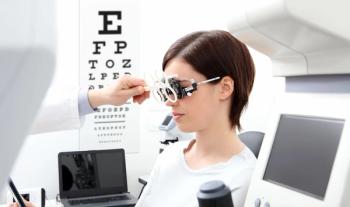
New report estimates $151 billion in health system, productivity costs due to unmanaged screen time in 2023
The report, released by the American Optometric Association and the Deloitte Economics Institute, illustrates the significant impact that screens have made in the workplace, and why it’s important that eye care providers help ease its cost.
The American Optometric Association (AOA) and the Deloitte Economics Institute released a report January 30 on the implications of unmanaged screen time and found that working in front of screens generated health system, productivity, and personal wellbeing costs equivalent to an estimated $151 billion in 2023. The report, entitled, “The impact of unmanaged excessive screen time in the United States” was developed in part of AOA’s national public awareness campaign Eye Deserve More, according to a news release.
The report studies the impacts of ever-growing screen time levels and how eye care providers can prevent staggering annual costs caused by myopia and eye strain through annual comprehensive exams. As few as 2 hours of screen exposure a day can impact an individual’s quality of life, but the study found that more than 104 million working age Americans spend more than 7 hours a day in front of screens.1 Digital eye strain, or computer vision syndrome, can result in symptoms including dry eyes, blurred vision, headaches, and neck and back pain. It can also lead to other health conditions, including migraines.2
These symptoms can have a very real impact on whether employees can show up to work every day. Within a 4-week period, 3 in 5 people with eye conditions miss full or partial days of work because of symptoms related to said conditions. 1 in 10 miss more than a full work week. About 74% of employees say their eye conditions affect their work and productivity.2
“It’s impossible to ignore the impact that digital devices have had on our daily lives, particularly in the workplace.” shared Deloitte Economics Institute partner Simone Cheung, who led the report. “Through our study with AOA, we were able to quantify the cost of unmanaged screen time and gain insight into the impact on not only Americans’ health, but employers and the overall health system.”
Additionally, almost 70% of those working in office jobs are exposed to excessive screen time in comparison to 42% of those in other professions. 31% of the survey group, or 31.8 million people, exposed to excessive screen time did not see an eye care provider in the last 12 months in 2023. Over half of that group experienced vision-related symptoms that could be improved from regular visits to their eye care provider.1
“Up until now, we could see in our practices anecdotally that America’s excessive screen time-use had very real consequences for eye health,” said AOA president, Ronald L Benner, OD. “Through this report, we have even more data showing that not visiting a doctor of optometry can have notable cost implications and potentially reduce quality of life. These findings further underscore the importance of better screen time habits and receiving annual, in-person comprehensive eye exams with an AOA doctor of optometry to maintain your eye and overall health.”
The report stresses the importance of annual eye care provider exams and visits in the report, citing that if the average individual exposed to excessive screen time visited their eye care provider once a year, there could be an estimated gain of $45.5 billion in productivity, as well as up to $26.3 billion gained in wellbeing improvements.1 Regular visits can also help individuals experiencing excessive screen time symptoms avoid about $1,920 in costs from productivity and wellbeing.2
To help those with eye conditions in the workplace experience relief, AOA has developed a resource entitled, "Eye Health Guidance in the Workplace – A User Guide Study Companion," in an effort to educate employers and employees alike on health screen time habits and how to protect your eyes while working on screens.
Visit AOA’s
References
New report reveals cost of unmanaged screen time symptoms to be $151 billion per year. American Optometric Association. Press Release. Published January 30, 2024. Accessed January 30, 2024.
American Optometric Association, Deloitte Access Economics. The impact of unmanaged excessive screen time in the United States. Published January 30, 2024. Accessed January 30, 2024.
Newsletter
Want more insights like this? Subscribe to Optometry Times and get clinical pearls and practice tips delivered straight to your inbox.















































.png)


